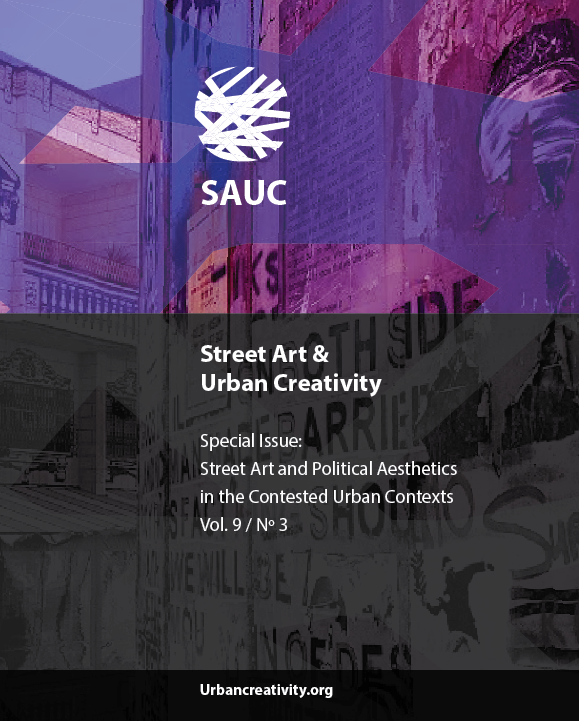Aesthetic Activism and the Carnivalesque in the Urban Social Movements
DOI:
https://doi.org/10.25765/sauc.v9i3.802Keywords:
Aesthetics, art, activism, carnivalesque, social movements, urban space, tactical frivolityAbstract
This paper considers the ways in which changes and experimentations in the realm of aesthetics ,as well as in the new forms of political participation and representation in an era of global revolt, have resulted in a deep connection between the aesthetics and politics of civil disobedience, political activism and artistic representation. Specifically, the discussion is based on a comparative analysis of the urban activism of the Carnival Against Capital protests in London and Seattle, the Occupy Movement in New York, and the Gezi Park Movement in Turkey where the aesthetics of active participation represents a new kind of politicization—collective memory and language, sensual festivity and the forming of communitas—that goes beyond the conventional understanding of the convergence of politics and art.
The author focuses on the notable carnivalesque character in those protests—the costumes, the masks, the performances, the interventional tactics and the aesthetics of community building. Based on the theories of aesthetics and rebellion the paper proposes the concept of carnival aesthetics as the study of the sensuous and subversive experience of the multitude when marching, throwing slogans, battling with police forces behind the barricades, performing and dancing together on the streets. Here carnivalesque aesthetics are employed as a means to create diversity, creativity, decentralization, horizontality, egalitarianism and direct action—the political principles that are at the heart of the recent protests. The discussion demonstrates that while thriving authoritarianism depends on disciplined individuals and the crisis in democracy, carnival aesthetics during protests present radicalized social relations that are increasingly becoming the core of the current social, cultural and environmental struggles around the world.
Downloads
Global Statistics ℹ️
|
547
Views
|
394
Downloads
|
|
941
Total
|
|
Downloads
Published
How to Cite
Issue
Section
License
Those authors who publish in this journal accept the following terms:
-
Authors retain copyright.
-
Authors transfer to the journal the right of first publication. The journal also owns the publishing rights.
-
All published contents are governed by an Attribution-NoDerivatives 4.0 International License.
Access the informative version and legal text of the license. By virtue of this, third parties are allowed to use what is published as long as they mention the authorship of the work and the first publication in this journal. If you transform the material, you may not distribute the modified work. -
Authors may make other independent and additional contractual arrangements for non-exclusive distribution of the version of the article published in this journal (e.g., inclusion in an institutional repository or publication in a book) as long as they clearly indicate that the work was first published in this journal.
- Authors are allowed and recommended to publish their work on the Internet (for example on institutional and personal websites), following the publication of, and referencing the journal, as this could lead to constructive exchanges and a more extensive and quick circulation of published works (see The Effect of Open Access).













